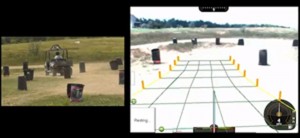The Perfect Backseat Driver
-
-
slice.mit.edu
Filed Under
Recommended
Developed by Sterling Anderson SM '09, a doctoral candidate in the Department of Mechanical Engineering, and Karl Iagnemma SM '97, PhD '01, a principal research scientist in the Robotic Mobility Group, the system monitors a driver’s performance and, when sensing oncoming harm, springs to action and navigates the vehicle to a safe area.
From MIT News:[youtube http://www.youtube.com/watch?v=ouQYfWxEmP8&w=500&h=281]"The system uses an onboard camera and laser rangefinder to identify hazards in a vehicle's environment. The team devised an algorithm to analyze the data and identify safe zones—avoiding, for example, barrels in a field or other cars on a roadway."
Anderson and Iagnemma have run more than 1,200 trials of the system using a modified Jeep-style vehicle on a self-made obstacle course in Saline, Mich., and reported minimal accidents. The trials also indicate that the human drivers with faith in the system, especially in moments of near-collision, drove the test course with more confidence and accuracy than those who did not trust it.
The team presented their research paper, "Constraint-based planning and control for safe, semi-autonomous operation of vehicles," at the 2012 IEEE Intelligent Vehicles Symposium and a series of posts by Sterling at Design Impact describes the background, motivation, and early results of their research.
What's your take? The system could be especially helpful if a driver falls asleep at the wheel. But could you trust a semi-autonomous vehicle, especially in a moment of danger? Let us know in the comments below or on Facebook.








